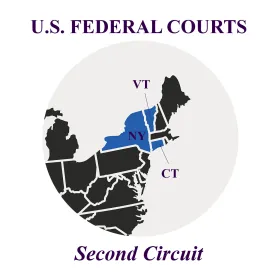On December 16, 2021, United States District Judge Colleen McMahon of the Southern District of New York overturned the confirmation of Purdue Pharma’s chapter 11 plan of reorganization, “put[ting] to rest” the non-consensual third-party releases debate that has “hovered over bankruptcy law for thirty five years.” Judge McMahon concluded in her 142-page opinion that “the Bankruptcy Code does not authorize such non-consensual non-debtor releases: not in its express text (which is conceded); not in its silence (which is disputed); and not in any section or sections of the Bankruptcy Code that, read singly or together, purport to confer generalized or ‘residual’ powers on a court sitting in bankruptcy.”
Background
After battling thousands of lawsuits brought by individuals or the estates of individuals who had become addicted to OxyContin, Purdue Pharma L.P. and 23 affiliated debtors (collectively, the “Debtors” or “Purdue”) filed voluntary petitions for chapter 11 relief on September 15 and 16, 2019, in the United States Bankruptcy Court for the Southern District of New York. On March 15, 2021, Purdue filed the first version of their plan of reorganization, which subsequently had twelve amendments (the “Plan”). The Plan incorporated a settlement with the Sackler family, pursuant to which the Sackler family will provide $4.325 billion to the Purdue estate in exchange for the release of third-party claims against the members of the Sackler family, their affiliates and related entities (collectively, the “Shareholder Released Parties”). The Plan, which would provide billions of dollars (funded through the settlement with the Sackler family) for the resolution of both private and public claims and fund opioid relief and educational programs, was approved by a supermajority of votes by each class of creditors. However, certain notable creditors voted against the plan, including eight states and the District of Columbia (the “State Parties”), certain Canadian municipalities and Canadian indigenous tribes (the “Canadian Parties”), the City of Seattle, and 2,683 personal injury claimants. Many of these creditors, as well as the United States Trustee (the “U.S. Trustee”) and the U.S. Attorney’s Office for the Southern District of New York also filed objections to the confirmation of the Plan. However, after a six-day hearing, Bankruptcy Judge Robert Drain confirmed the Plan through an oral ruling on September 1, 2021, followed by a written decision issued on September 17, 2021.
The U.S. Trustee, the State Parties, the Canadian Parties, and five pro se individual personal injury claimants (collectively, the “Appellants”) appealed the Plan’s confirmation. The primary complaint of the Appellants on appeal was that the Plan provides the Shareholder Released Parties with releases that are too broad, including releases of claims that are particularized and direct to the Shareholder Released Parties and not derivative of the Debtors’ claims.
The Third-Party Release
The release provision at issue is set forth in Section 10.7(b) of the Plan. The salient portion of Section 10.7(b) reads:
[T]he Shareholder Released Parties . . . shall be conclusively, absolutely, unconditionally, irrevocably, fully, finally, forever and permanently released . . . by the Releasing Parties from any and all Causes of Action, including any derivative claims asserted or assertible by or on behalf of the Debtors or their Estates and including any claims that any Releasing Party, or that any other Person or party claiming under or through any Releasing Party, would have presently or in the future been legally entitled to assert in its own right (whether individually or collectively) or on behalf of any Releasing Party or any other Person . . . whether existing or hereinafter arising, in each case, (x) based on or relating to, or in any manner arising from, in whole or in part, [the Debtors, the estates or the Debtors’ chapter 11 cases] and (y) as to which any conduct, omission or liability of any Debtor or any Estate is the legal cause or is otherwise a legally relevant factor.
“Releasing Parties,” furthermore, is defined broadly as:
(i) the Supporting Claimants, solely in their respective capacities as such, (ii) all Holders of Claims (whether or not asserted, transferred, hypothecated, waived, Allowed, allowable, choate, known, accrued, treated under this Plan or otherwise) against, or Interests in, the Debtors, (iii) all Holders of Future PI Channeled Claims, (iv) the Settling Co-Defendants, (v) with respect to each of the Persons in the foregoing clauses (i) through (iv), each of their Related Parties and (vi) each of the Debtors’ Related Parties, in each case, other than any Shareholder Released Party.
The Plan provides broad releases for the Shareholder Released Parties that enjoin third parties from asserting direct claims (not derivative claims, which the Bankruptcy Code permits) against the Shareholder Released Parties, as long as (i) the claims are “based on or relat[ed] to” the Debtors or (ii) the “conduct, omission or liability of” the Debtors is a “legally relevant factor” to the claims. Further, the releases are non-consensual, meaning that parties who objected to the Plan and the releases are nonetheless bound by the releases. In exchange for these releases, the Shareholder Released Parties agreed to contribute $4.325 billion to a fund that would be used to resolve and settle claims arising from and related to Purdue’s sale and marketing of OxyContin.
Courts’ Analyses
Judge Drain, in deciding to confirm the Plan, found that (1) the settlement with the Sacklers (i.e., the broad non-consensual releases in exchange for the $4.325 billion contribution) was necessary to the Plan, (2) the settlement was fair and reasonable, and (3) it was necessary and appropriate to approve the non-consensual releases, even though the Shareholder Released Parties were not debtors.
In addition to finding the settlement factually fair and reasonable, Judge Drain also concluded that the implementation of such settlement was legal. Specifically, Judge Drain concluded that he had the statutory authority to approve the non-consensual third-party releases. Judge Drain found such authority in the “necessary or appropriate” power under section 105(a) of the Bankruptcy Code as well as the residual authority provided under section 1123(b)(6) (i.e., the power to “include any other appropriate provision not inconsistent with the applicable provisions of this title”). Judge Drain also cited sections 1123(b)(5) and 1129 of the Bankruptcy Code.
On appeal, Judge McMahon sharply disagreed and concluded that the Bankruptcy Code does not authorize the non-consensual release of third-party claims against non-debtors, stating:
Contrary to the bankruptcy judge’s conclusion, Sections 105(a) and 1123(a)(5) & (b)(6), whether read individually or together, do not provide a bankruptcy court with such authority [to order the non-consensual release of third-party claims against non-debtors]; and there is no such thing as “equitable authority” or “residual authority” in a bankruptcy court untethered to some specific, substantive grant of authority in the Bankruptcy Code. Second Circuit law is not to the contrary; indeed, the Second Circuit has not yet taken a position on this question.
Specifically, Judge McMahon reviewed the text, legislative history, and case-law of section 524(g)—the only section of the Bankruptcy Code that expressly authorizes third party releases within the asbestos context—and noted that Congress had made a conscious decision to limit the scope of third-party releases to asbestos cases and that, considering the comprehensive scheme of the Bankruptcy Code, it would be inconsistent to infer meaning (i.e., authority to approve third-party releases in non-asbestos cases) from Congressional silence.
Implications
The implications of Judge McMahon’s decision are significant. Although Purdue has already announced its intent to appeal the District Court’s ruling, Judge McMahon’s decision is likely to affect many debtors’ restructuring strategies, including whether to file chapter 11 cases in the Southern District of New York until the third-party release issue is settled by the Second Circuit Court of Appeals or the United States Supreme Court. Further, this is not the first attempt to curtail non-consensual third-party releases this year. On July 28, 2021, the House Committee on the Judiciary Subcommittee on Antitrust, Commercial and Administrative Law announced proposed legislation, the Nondebtor Release Prohibition Act of 2021 (“NRPA”), which would largely prohibit the use of nonconsensual third-party releases. You can read further about the NRPA here. While it is far from certain that Congress will act on the NRPA, the political winds are certainly blowing against non-consensual third party releases. Regardless of the outcome of Purdue’s plan, it will be helpful for the courts or Congress to put this issue to rest.




 />i
/>i
